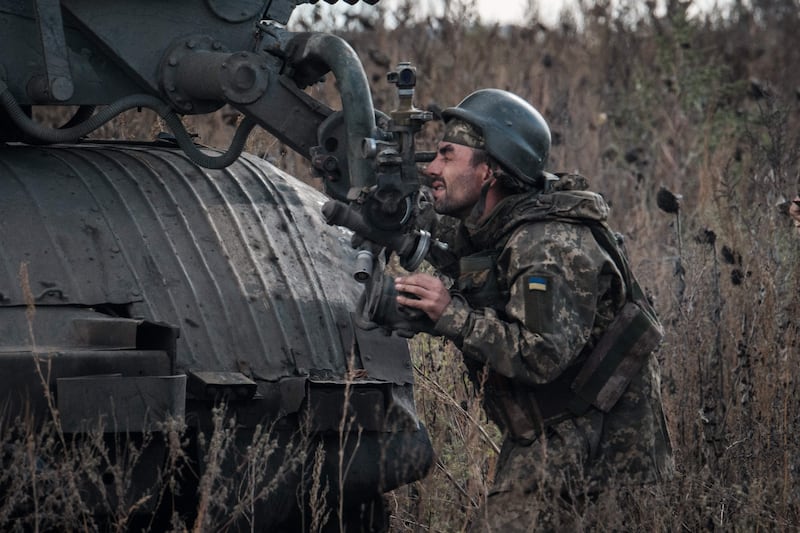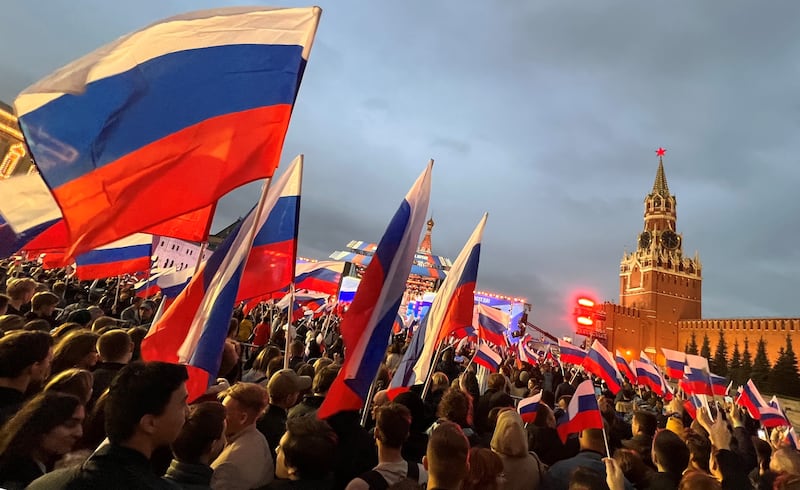US officials and lawmakers have warned that Ukraine faces a critical battle to reclaim territory in the south of the country before winter brings treacherous fighting conditions if it is to deny Russia a chance to solidify its hold on the region.
In recent days, Ukrainian forces have made swift gains on two separate fronts, recapturing swaths of territory in the east and breaking through front lines in the south around the crucial regional hub of Kherson. Vladimir Putin has claimed both regions as part of Russia and has begun the process of annexing them.
The Pentagon said Kyiv must capitalise on its momentum in the east to push back Russian forces occupying the strategic regions of the south, which are a gateway to the Black Sea.
“The fighting season is drawing short. The Ukrainians have gained the upper hand and need to continue to press their advantage,” said Chris Murphy, a Democrat on the Senate foreign relations committee.
Nonfiction books to look out for in 2025: Leo Varadkar and Brenda Fricker memoirs among year’s most anticipated titles
Azerbaijan Airlines crash: Putin calls Kazakhstan’s president to express condolences, Kremlin says
Russia claims it stopped plot by Ukraine to kill high-ranking officer and war blogger
“The true long-term disaster for Ukraine is for Russia to cut off Ukraine’s access to the water from Mariupol to Odesa. Ukraine’s lifeblood is its access to Odesa and so it’s important for them to be in an offensive posture, not just a defensive posture in the south,” he added.
While Ukraine has notched up success in its lightning counter-offensive in the Kharkiv region and its surprise dislodging of Russian forces in Lyman in the Donetsk region, western allies see the liberation of Kherson as a decisive test.

“If you can control Kherson, you can certainly prevent folks from getting to Odesa, which I think we all believe that the Russians really wanted,” a senior US military official said.
Ukrainians agreed that the coming weeks would be pivotal to their campaign to reclaim land in the south.
[ Irish man Rory Mason killed in fighting in UkraineOpens in new window ]
“Certainly it is crucial to advance swiftly in liberating occupied territory because there is a sense that changes in the weather will limit further active military actions in this region,” said Ihor Romanenko, a former deputy head of Ukraine’s general staff.
“If our allies were to help us by providing more of the modern weaponry we are asking for, then the situation would be much swifter and we would not be talking about the factor of weather,” he added.
Military officials and analysts estimated Ukraine could liberate Kherson any time from mid-November – if they succeed in doing so at all.
Ukrainian forces have made progress north-east of the city and have established a foothold on the Dnipro river, a second US defence official said. They are also moving towards Kherson from the north, but more slowly. Ukraine’s president Volodymyr Zelenskiy confirmed on Tuesday that his forces had recaptured several towns north-east of Kherson.
“They need to do something about Kherson, and sometime soon,” said a western diplomat. “It’s morale boosting for the domestic audience and the military, but also evidence that both the training and the equipment that has been provided is being put to its best use.”
[ Russia-Ukraine war: ‘Dozens’ of towns liberated in east and south, says ZelenskiyOpens in new window ]
Officials said there was urgency for Ukrainian forces to recapture the south before the winter because the ground in the region hasn’t frozen for the past three years, meaning that the terrain will soon become extremely muddy.
These conditions will make it hard for both sides to manoeuvre, forcing them to stay on main roads, where they will be exposed. The mud also hands an advantage to those defending territory, since they do not have to move across land, officials and analysts said.
Even though Russian morale is low, current and former officials said Moscow had reinforced its positions in the south, making any Ukrainian offensive more challenging.

“The Russians have taken a lot of effort and a lot of time to dig in a little bit differently than they did in the east,” said a Nato official. “They were able to move armour in, they were able to build some rudimentary defences around.”
The official added: “That’s where that maths comes in ... the Ukrainians will need an overwhelming force to get in there.”
A US defence official said, however, that Russian forces had been struggling with the infrastructure and logistics required to move supplies ahead of the winter – something Kyiv could use to its advantage.
“The Ukrainians need to be thinking, using their clever, flexible, special operations training that they received from us and our allies, to figure out how to manipulate the Russians into ceding some advantage on the ground,” said Evelyn Farkas, a former top Pentagon official in Barack Obama’s administration.
[ Complaints about Irish coverage of Russia’s Ukraine war rejected by regulatorOpens in new window ]
The US has committed more than $16.8 billion (€16.9 billion) in security assistance to Ukraine since Russia invaded in February. President Joe Biden last week signed into law more emergency aid for Ukraine, including $7 billion in lethal aid and weapons contracts.
His administration also announced $625 million in new lethal assistance for Ukraine this week, including four more long-range rocket systems called Himars that had fuelled Ukrainian advances in the north and south. Officials say these will shortly arrive.
Ukraine’s western allies are closely watching the Kherson offensive for evidence that the military can deploy the weapons it has received in a complex, multipronged assault on deeply entrenched Russian forces in an urban environment.

US officials said they were providing what the Ukrainians needed to avoid escalation. They were adamant that Putin’s latest move on annexation and his blustery nuclear threats should not deter Ukraine from moving aggressively to recapture its territory.
“Annexation doesn’t change anything from a Ukrainian perspective other than to motivate them to go harder and faster,” said Ben Hodges, a former top US army commander in Europe who is now a senior adviser for Human Rights First.
US officials were confident that the western coalition could help Ukraine resist Putin’s forces through the winter.
“If anything, all of this stuff that Putin is doing including weaponisation of energy is making Europeans mad and making them determined not to buckle and not to be held hostage by him,” a senior US official said.
US officials and lawmakers said winning back more terrain in the south would be essential to giving Ukraine a better bargaining position for possible future ceasefire negotiations with Russia.
“Clearly, Ukraine needs a port on the Sea of Azov, they need a port on the Black Sea, east of Crimea, and Kherson is obviously a big city, they want to recover that,” said Brad Sherman, a California Democrat on the House foreign affairs committee.
“The ultimate settlement would be six, eight months from now. Putin controls somewhat more acreage than he did in February ... and then we reach a ceasefire. But I think Ukraine needs to take some more territory back before that happens.” – Copyright The Financial Times Limited 2022










